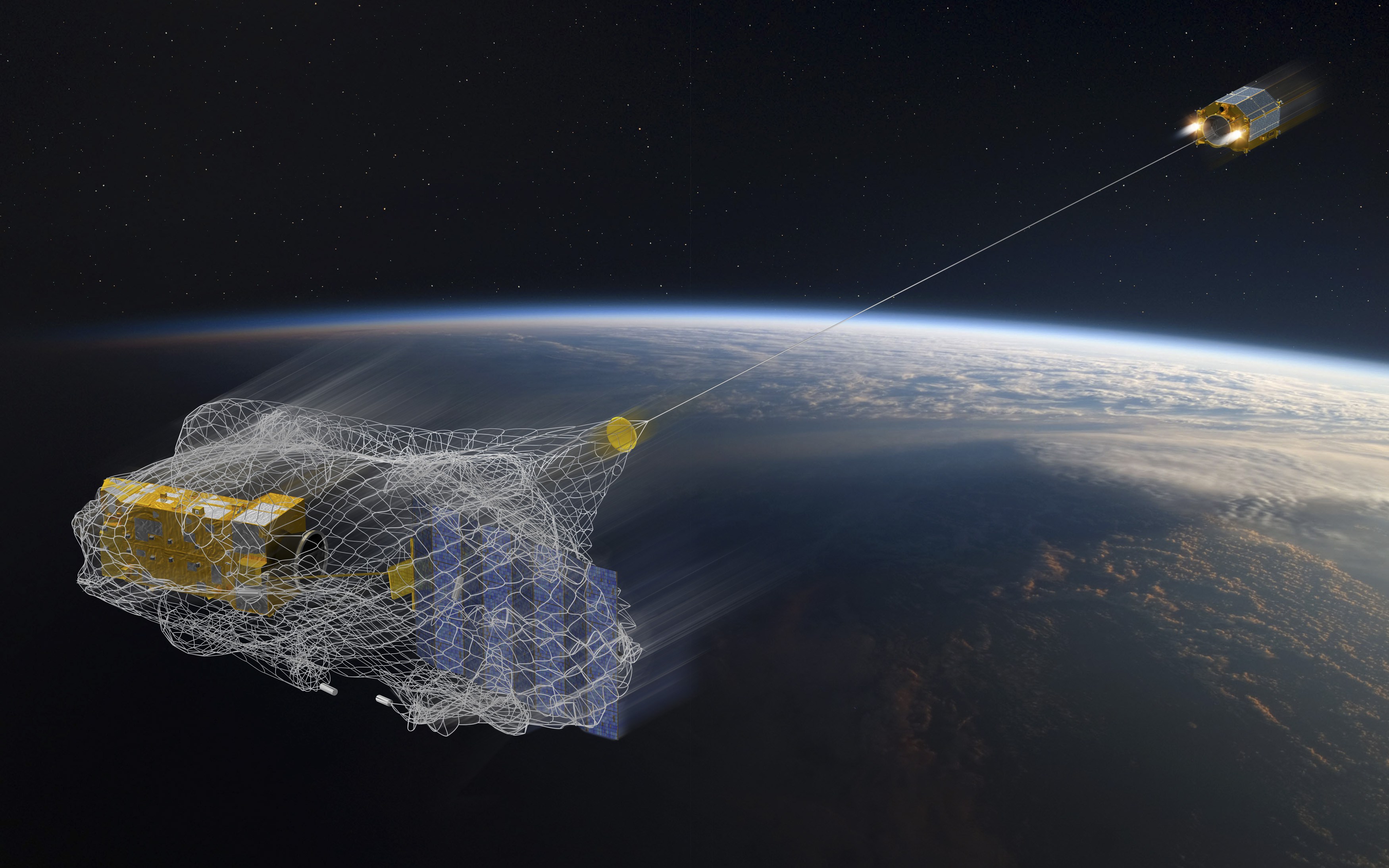 Hunt for space junk can look like this
Hunt for space junk can look like thisMost recently, Habré
published news that the United States decided to move from words regarding the fight against space debris to the case. In particular, the US National Space Council announced its intention to launch in the near future a new system for monitoring space debris. Garbage is one of the problems that needs to be addressed as soon as possible.
But just observing objects that are loosely hanging around the Earth’s orbit, representing a danger to expensive satellites and spacecraft important for the Earth, is not enough, they need to be destroyed. And the initiative was made: the other day a specialized garbage collection system was launched, which was called
RemoveDebris . It was launched by the crew of the International Space Station. RemoveDebris is a satellite that was created with one sole purpose - to make outer space around our planet cleaner.
According to NASA, at least 8,000 tons of garbage are currently in the Earth’s orbital space. Most of the objects that make up the cloud of garbage are debris whose size is more than 1 cm. In total, there are more than 750 thousand of such fragments. Their main danger is damage to satellites and vehicles that are currently in orbit or going to it.
Last year, this has already happened: in particular, one of these particles collided with an ISS module, as a result of which the window
was damaged . To date, scientists have not come up with an effective way to get rid of space debris, and the trajectories of aircraft are lined up taking into account the trajectory of the movement of particles of space debris in orbit. Of course, this delivers certain inconveniences, because there is always the danger that the successful completion of the next mission will be adversely affected by any unrecorded fragment of the old satellite.
The RemoveDebris experimental satellite was developed by a team of engineers from the British company SSTL in collaboration with specialists from several other European countries and South Africa. The system was delivered this spring to the ISS by the Dragon ship. The satellite’s weight is 100 kilograms; it was launched into orbit on June 20 at 14:30 Moscow time. Two hours later, experts from the University of Surrey announced that they had managed to catch the signal from the satellite, that is, everything is going according to plan.
Over the next two months, work will be done on monitoring and debugging the functions of the satellite cleaner, after which the technology will be described in detail and the process of garbage collection will be shown. RemoveDebris is equipped with a special harpoon and a network for trapping garbage, two CubeSat satellites will help him in a difficult struggle. In September, an operation will be carried out to throw one of CubeSat into outer space at a distance of up to 7 meters. After that, RemoveDebris will throw out the network and use the motors to pull the satellite to itself so that the satellite does not fly into outer space.
In December 2018, the second phase of the satellite cleaning mission is scheduled. Using the camera and the lidar, RemoveDebris will perform the task of visual navigation, which will allow it to track and characterize the debris in orbit. All the data obtained, scientists will be able to carefully analyze on Earth.
In February, the final part of the experimental mission will take place, which is to search for particles of debris with a size of no more than 10 cm
2 . These debris will be captured using a harpoon, and it will be collected by means of a special sliding panel. Unlike the network, the harpoon can work at a distance of no more than 1.5 meters from the satellite. After the operation is completed, the satellite cleaner will deploy the sail to enter the upper atmosphere, and then it will burn.
Now it is known and about the alternative workings out which are conducted by the private companies and the research organizations. In particular, scientists are working on sticky satellites and electrodynamic traps to reduce the speed of space debris.
As for Russia, the country also offers some methods of dealing with space debris, those objects that are already in orbit. For example, Roscosmos proposed to create a laser gun in order to evaporate debris particles. The “weapon” is proposed to be installed onboard the ISS. And you can make such a gun from an optical telescope, after modifying it.